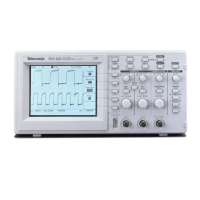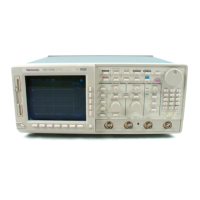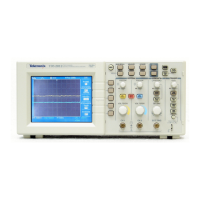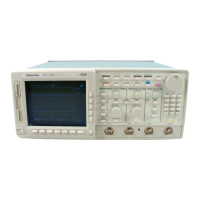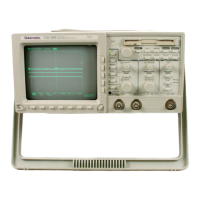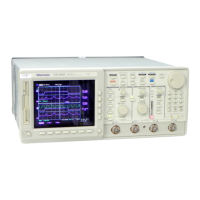Taking Cursor Measurements
3–118
TDS 420A, TDS 430A, TDS 460A & TDS 510A User Manual
There are two cursor modes: independent and tracking (see Figure 3–63).
Tracking Mode
Only Selected Cursor Moves
(press SELECT to change
which cursor is selected)
Both Cursors Move in Tandem
(press SELECT to suspend
cursor tracking)
Independent Mode
Figure 3–63: Cursor Modes
The cursor readouts differ depending on whether you are using H Bars, V Bars,
or Paired.
H Bars. The value after D shows the voltage difference between the cursors. The
value after @ shows the voltage of the selected cursor relative to ground (see
Figure 3–64). With video triggers, you can display the voltage in IRE units.
V Bars. The value after D
shows the time (or frequency) difference between the
cursors. The value after @ shows the time (frequency) of the selected cursor
relative to the trigger point. With video triggers, you can display the line number.
Paired. The value after one D shows the voltage difference between the two Xs;
the other D
shows the time (or frequency) difference between the two long
vertical bars. The value after the @ shows the voltage at the X of the selected
cursor relative to ground (see Figure 3–65).
If the paired cursors are moved off screen horizontally, Edge replaces the voltage
values in the cursor readout.
Do this procedure and those that follow to take a cursor measurement. To select
the type of cursors you want, do the following steps:
1. To display the cursor menu, press CURSOR (see Figure 3–64).
2. Press CURSOR
➞ Function (main) ➞ H Bars, V Bars, Paired, or
Off
(side).
Cursor Modes
Cursor Readouts
Select the Cursor
Function
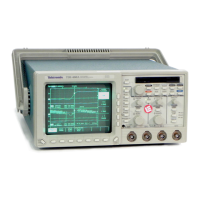
